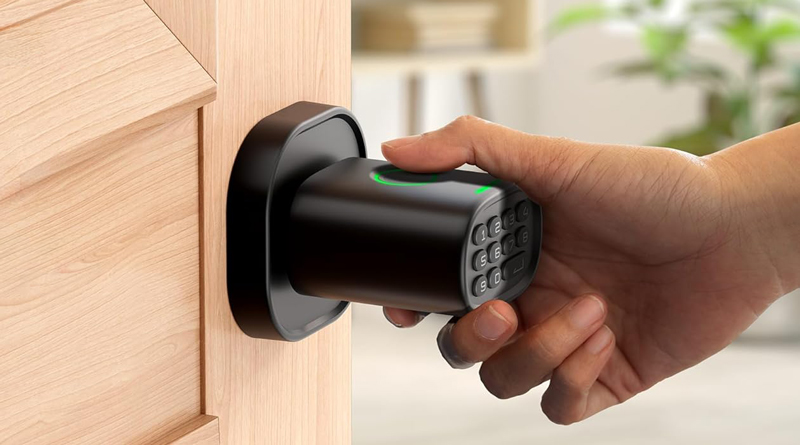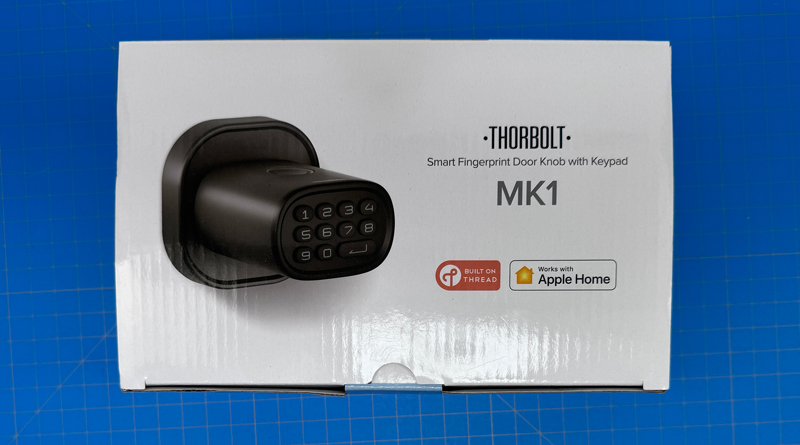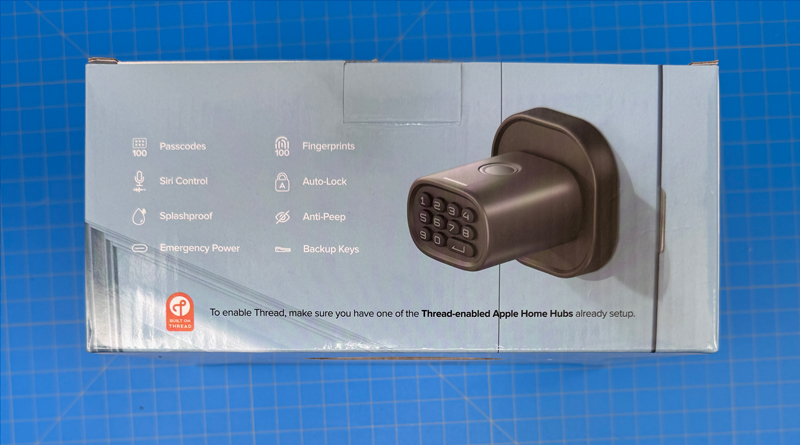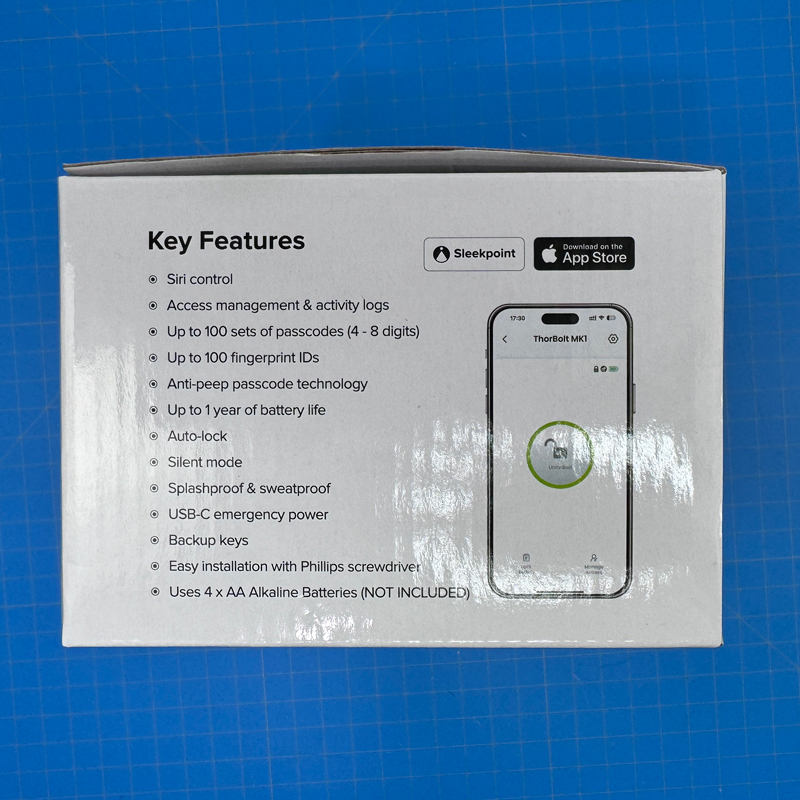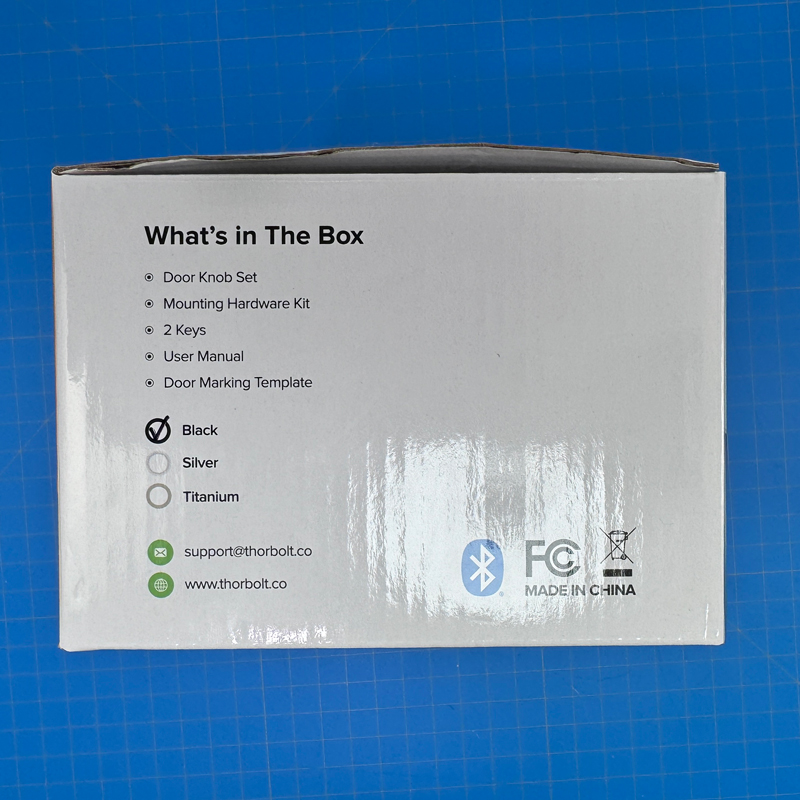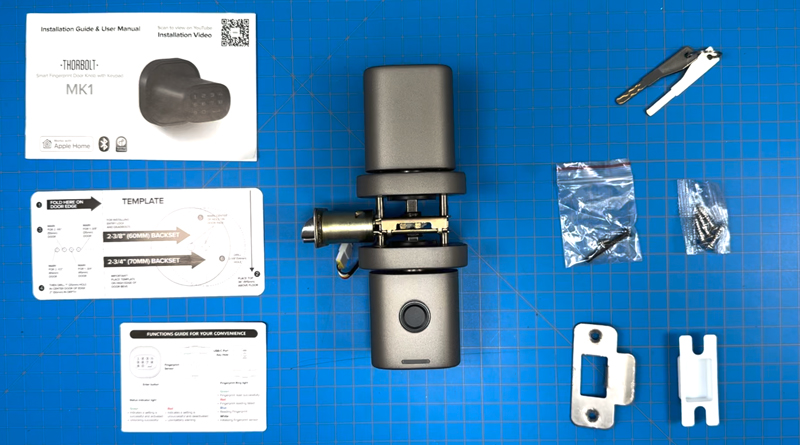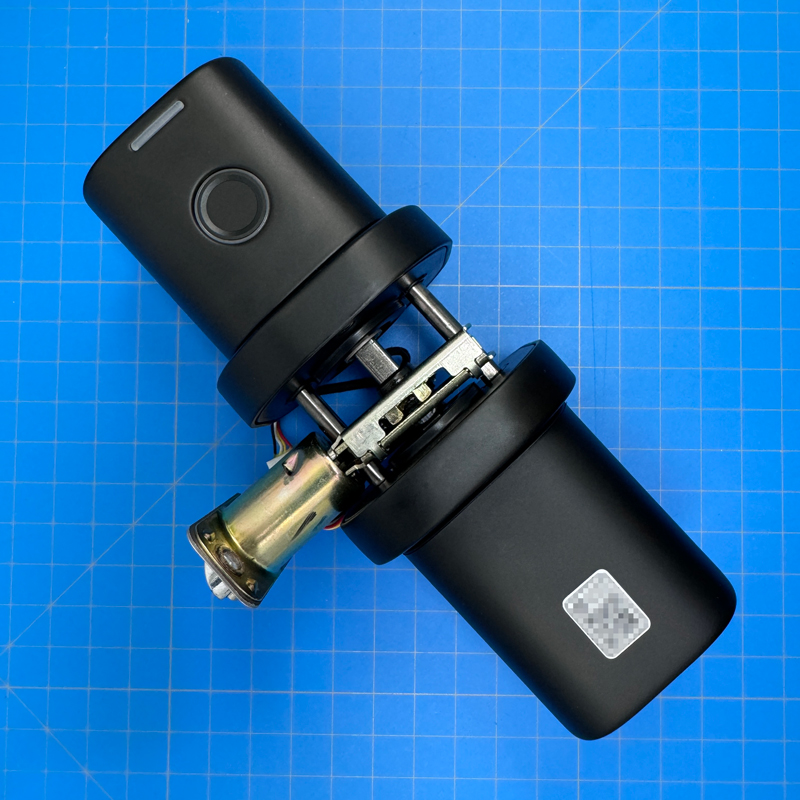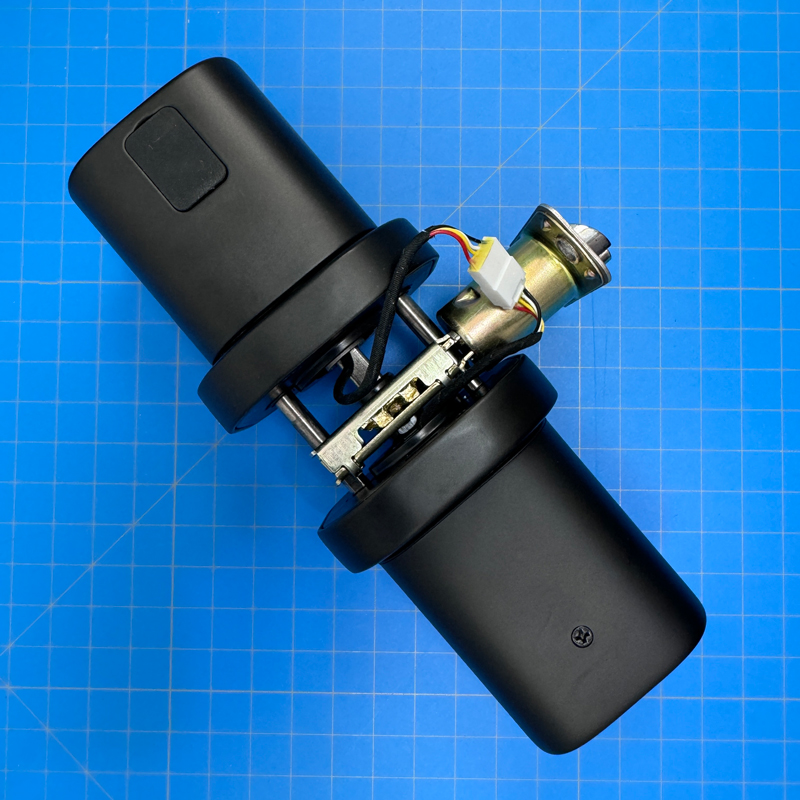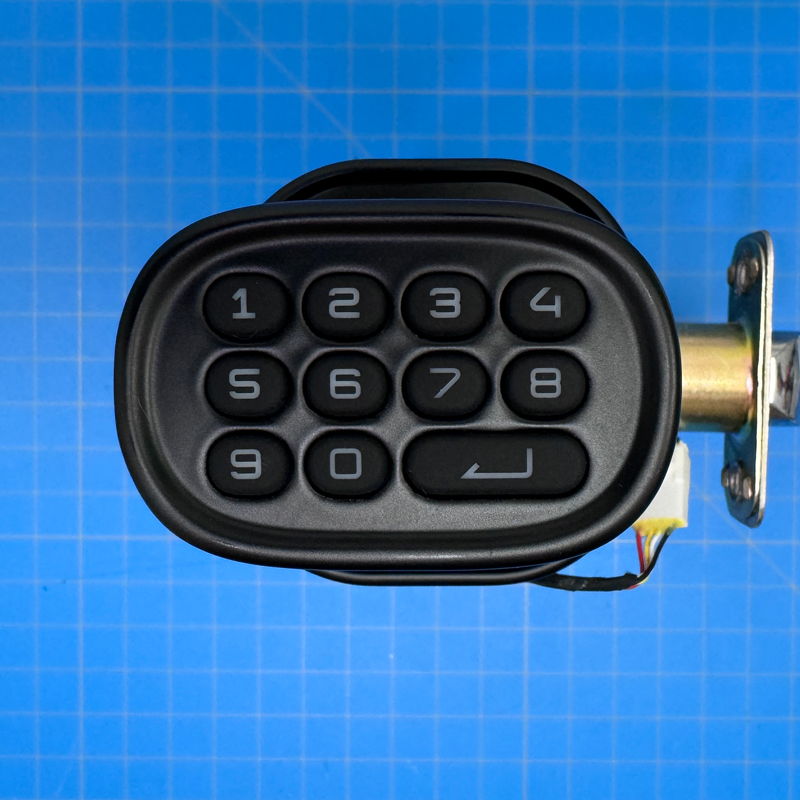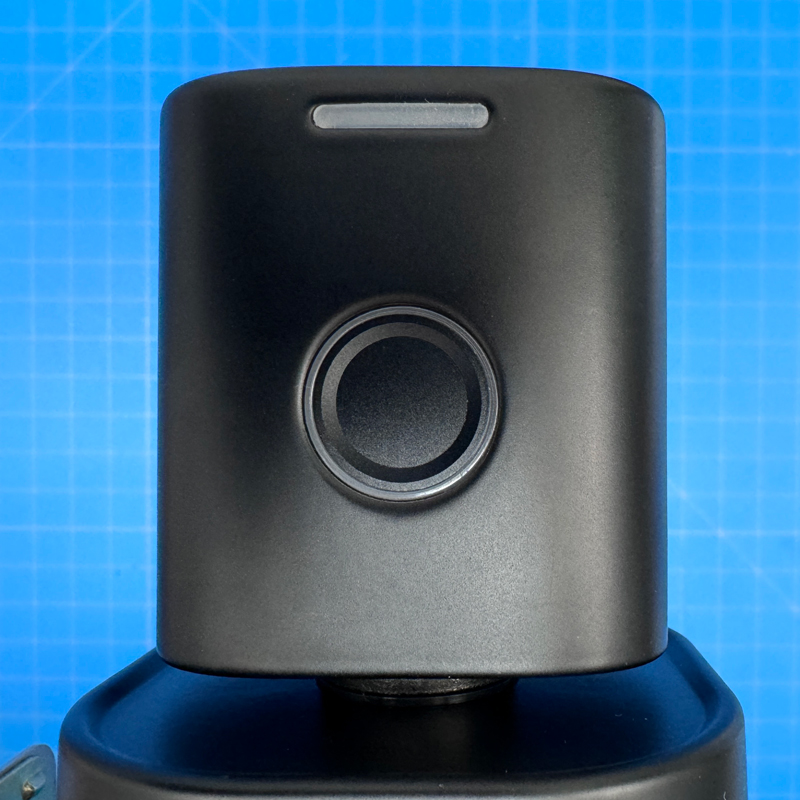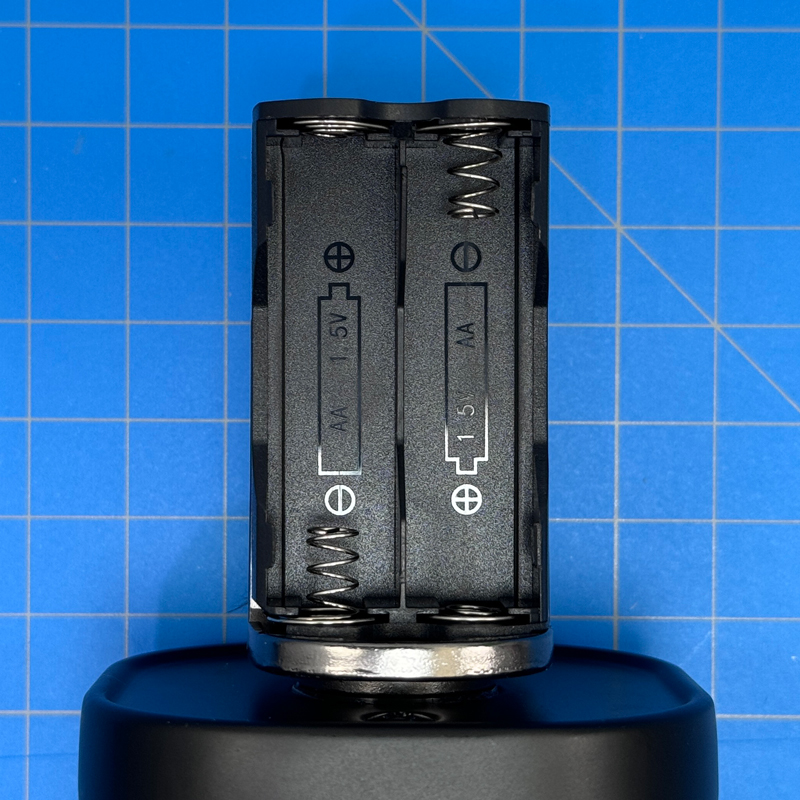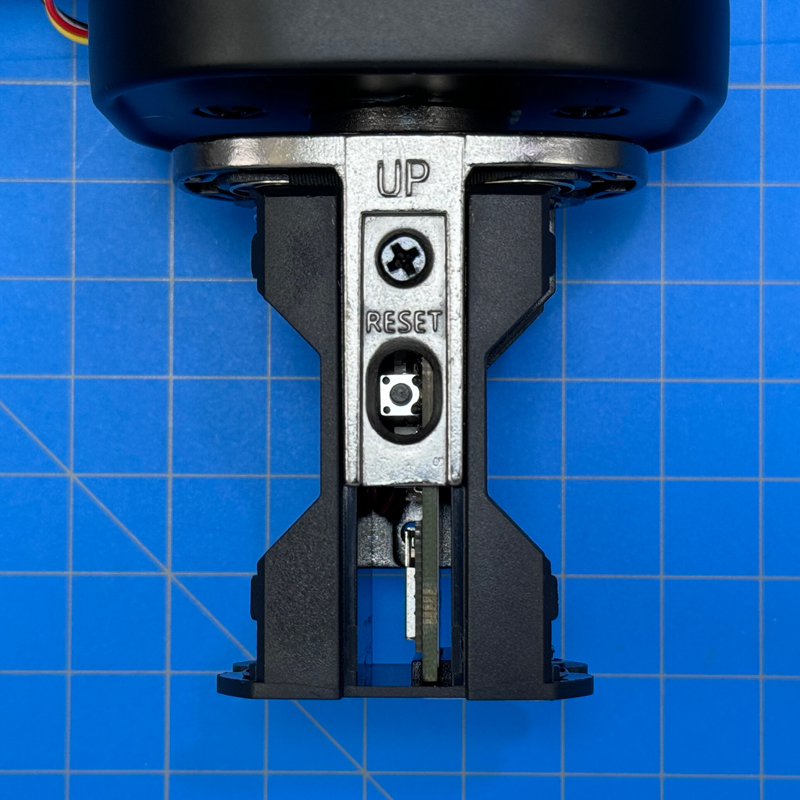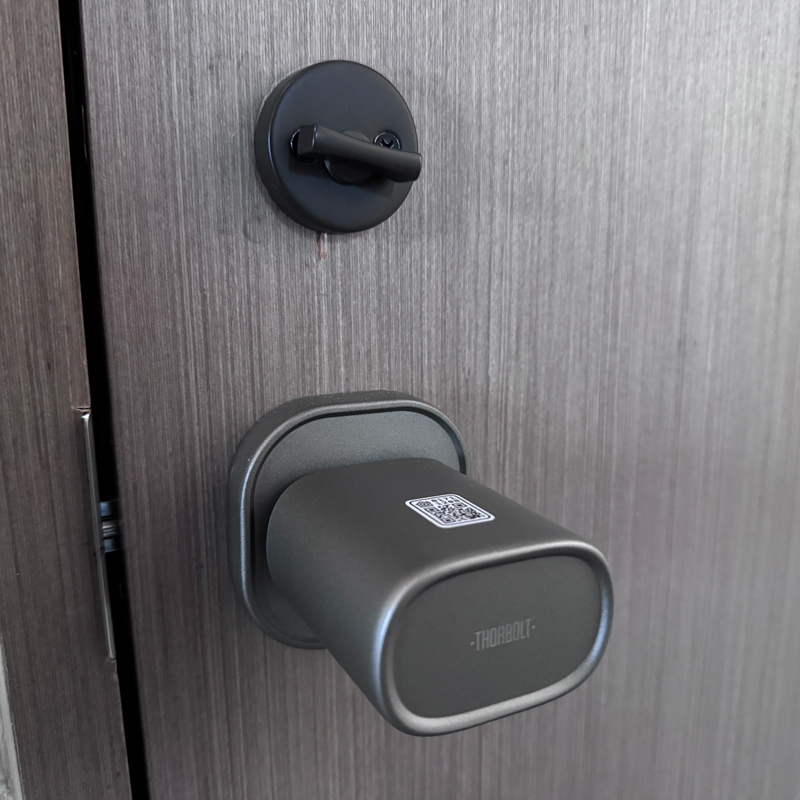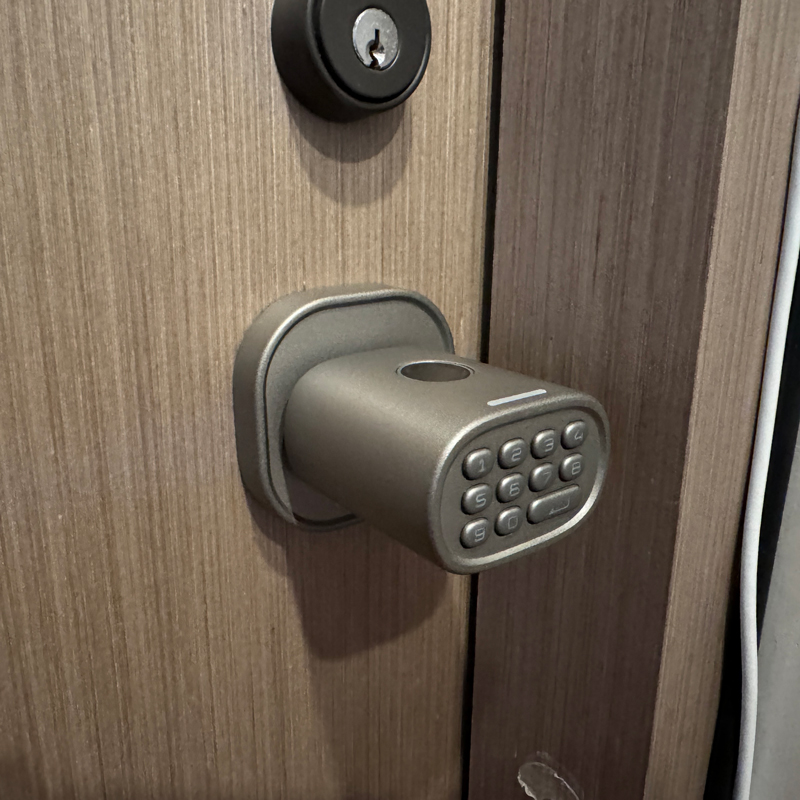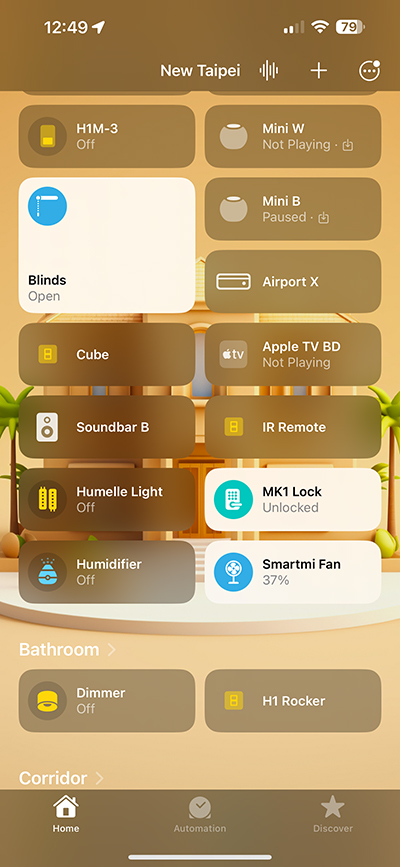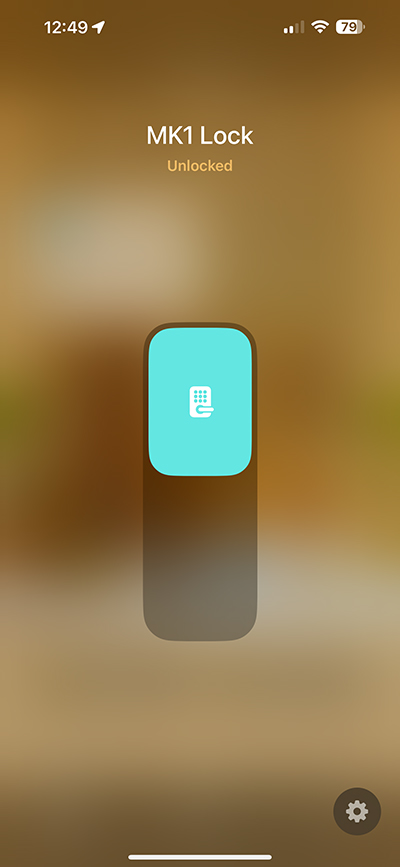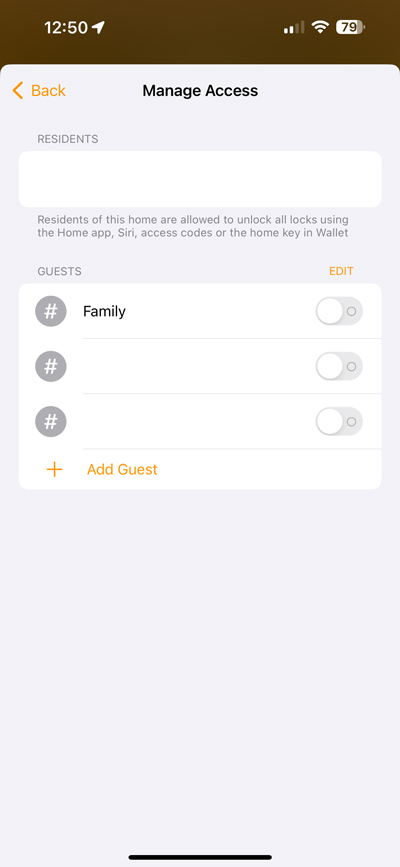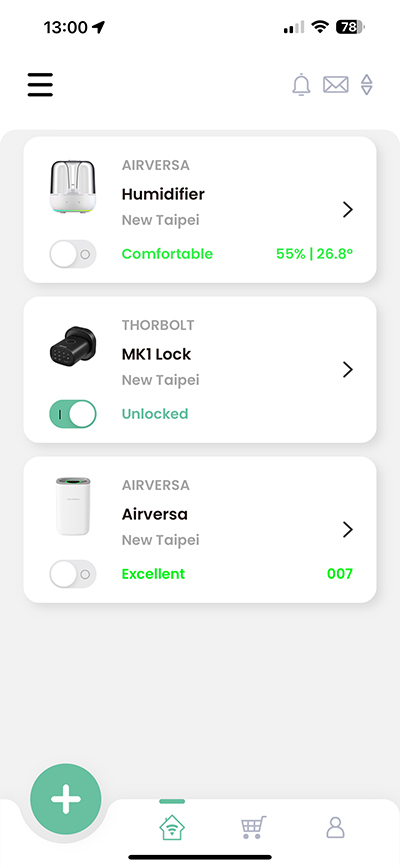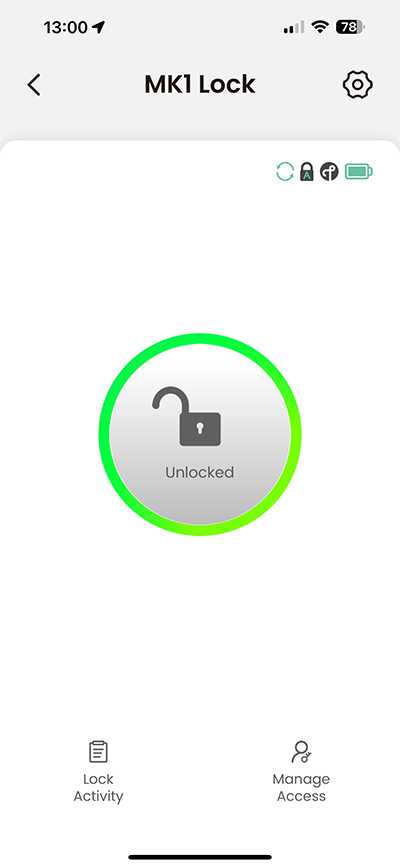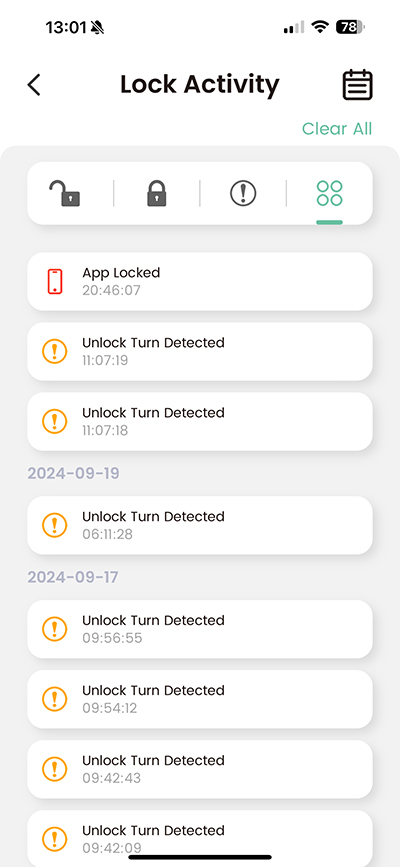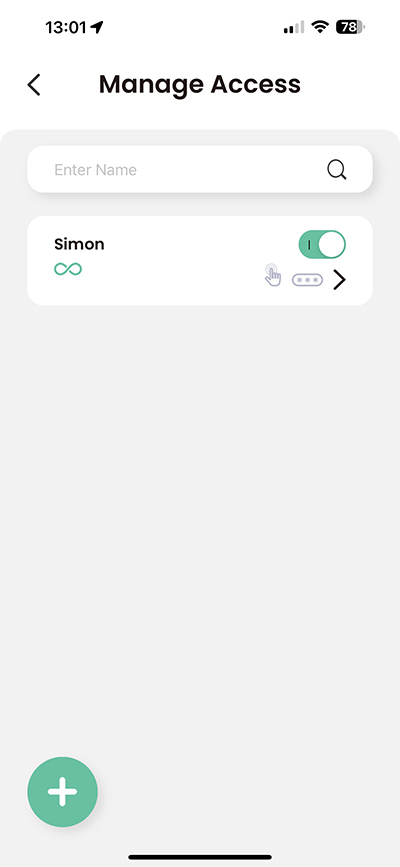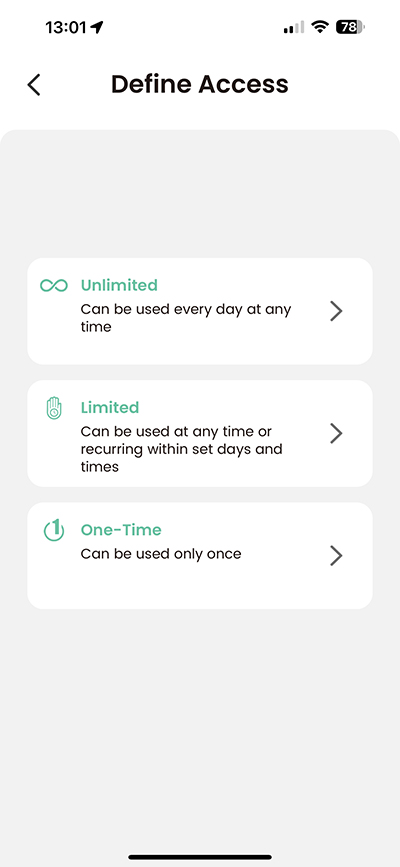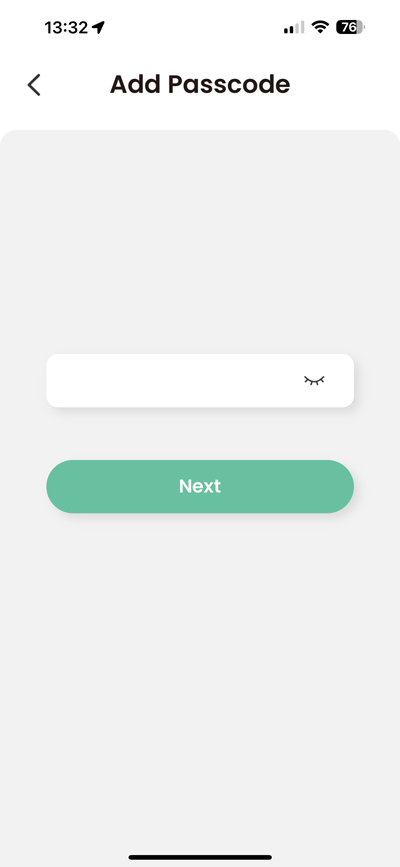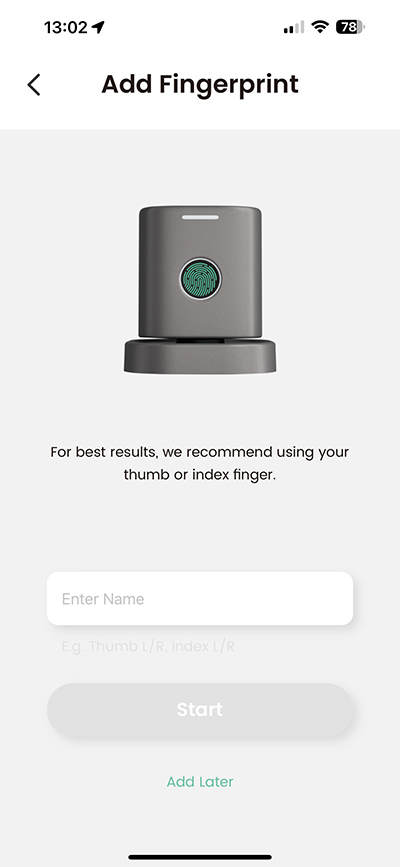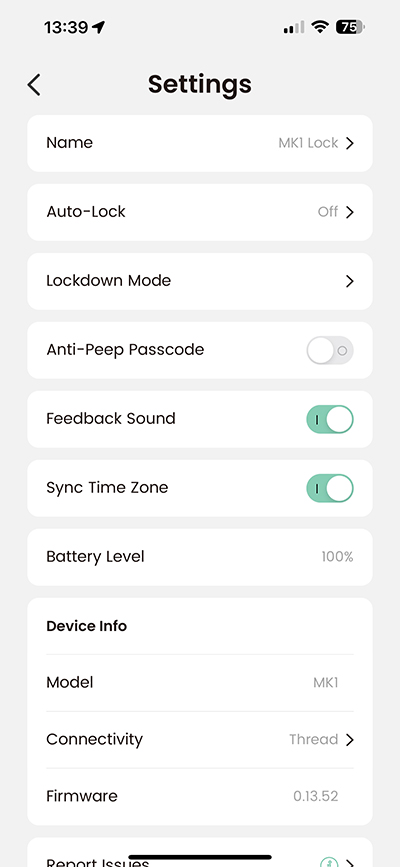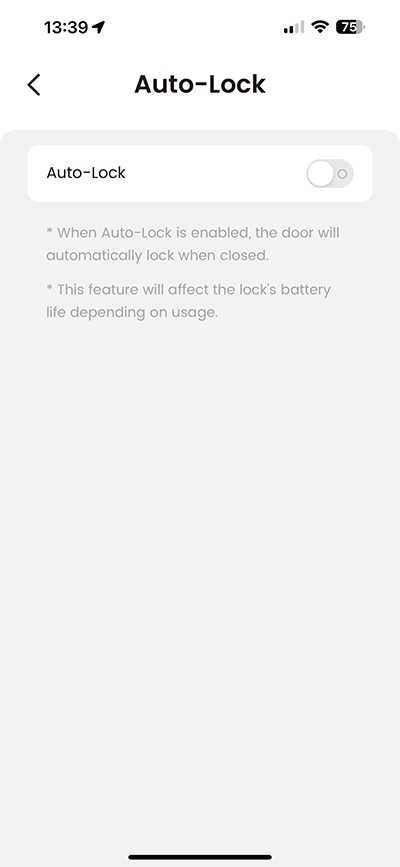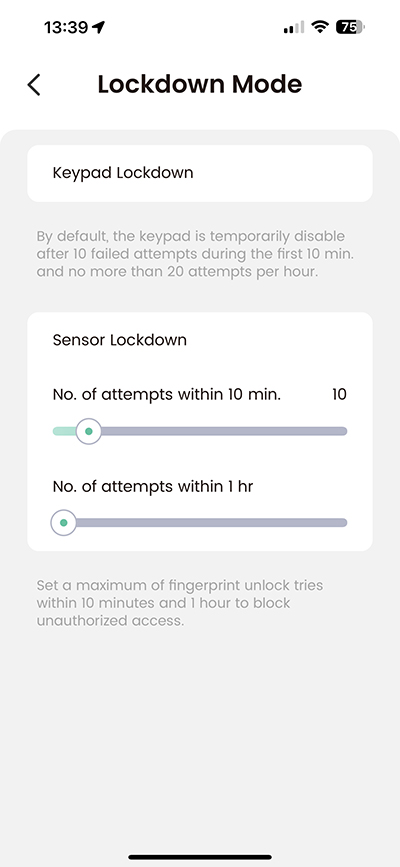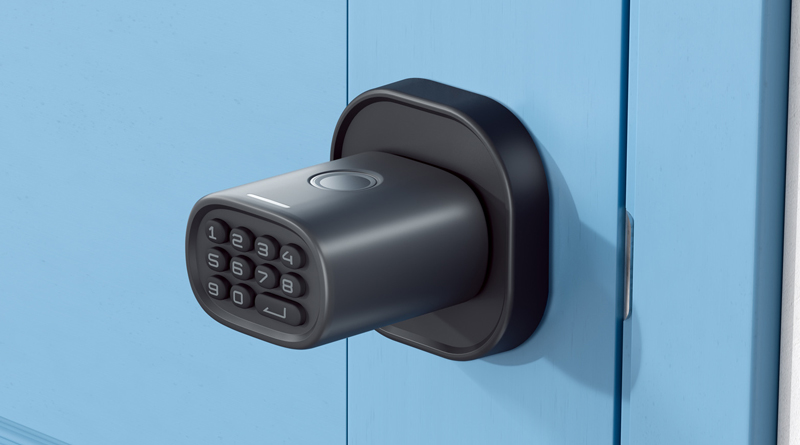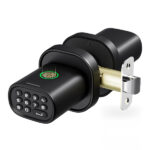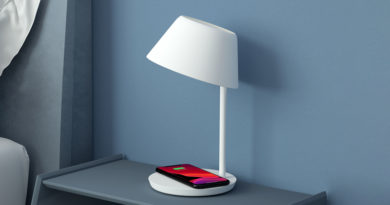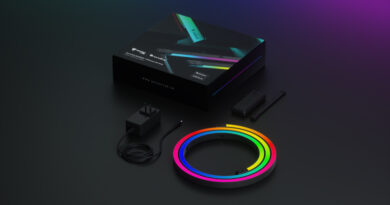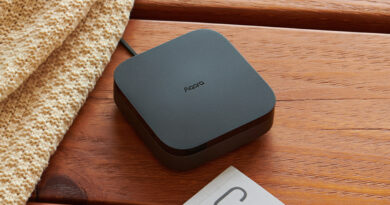Thorbolt MK1 Smart Fingerprint Door Knob (review)
If you’ve ever had a need for security or privacy when it comes to a room within your home, there are few choices – that is unless you’re happy to install an external lock to an internal door. Thankfully, today’s product is ultimately designed to be compact enough to not draw enough attention to itself, whilst also offering security, with a couple of distinct benefits. The lock in question, is the Thorbolt Fingerprint Door Knob with Keypad – or MK1 for short! Read on to learn more…
PACKAGING | CONTENTS
From the get go, this is an Apple Home exclusive product, hence the Apple Home logo. This means even though it uses Thread, it’s HomeKit over Thread, not Matter over Thread. It’s still a winner for me though simply due to the Thread capabilities.
As you can already see, this has a keypad, so you get passcode options, as well as control via Siri, but it also has a fingerprint reader, which takes this above and beyond the previous Holomarq model, that offered Thread but no fingerprint reader. Like the previous model, this has auto lock, anti-peep technology, backup keys and a USB-C port for emergency power. It’s listed as splash proof but doesn’t come with a specific IP rating.
Additional features listed on the side include access management via both the Sleekpoint or Apple Home apps, the option to store up to 100 passcodes and fingerprints, 12 months of estimated battery life, using four AA batteries, and ‘Silent’ mode. The other side shows there are three finishes available – Black, Silver, and Titanium. I’ve got the Black and Titanium models here, but haven’t seen a Silver model yet.
In the box you get a manual, a guide for when you might need to cut a hole in a new door, and a quick reference card for the main features. You get the lock (titanium model shown here), which comes in three parts – the interior assembly, exterior assembly, and the latch bolt – some screws, a pair of keys, and a strike plate and strike box.
The inside portion of the lock comes with a HomeKit code sticker on it, but there’s also a copy of the code on the inside of the handle too, which is also where the battery compartment is. The keypad is on the front of course, and has rubberised keys that also light up when activated. The keypad feels as you’d expect when used, and doesn’t feel loose or ill fitting, so there’s nothing to complain about really.
The fingerprint sensor is exactly where you’d want it to be in my opinion, and so it feels natural to use. It also has incredible fast reaction times when used. There’s an LED ring surrounding it, so whenever you place your digit on it, it’ll briefly flash green – assuming the print has been registered first – or red, if it misreads your print, or that fingerprint has not been registered. In front of the reader is another LED in the form of a strip. This effectively mirrors what you see with the LED ring surrounding the fingerprint reader. In practice it works really, really well and is pretty much flawless. on the underside of the external handle is a rubber cover that hides both a keyhole and a USB-C port.
Having the keyhole on the underside may seem inconvenient, but as you’re unlikely to use it in most cases, it doesn’t really matter. If nothing else, it should make it a little more awkward for would-be lock pickers. The key works slightly differently to a standard Yale type lock in that you don’t insert the key, turn it, then remove it from the unlocked door – it’s inserted, turned 90º, and left in until you turn the handle. Once unlocked, you turn the key back to its original position, whereupon you can then remove the key.
The USB-C port is for those rare instances where you forgot to replace your batteries, despite being notified of low battery levels in both Apple Home and the Sleekpoint app. You’d need something that can provide temporary power to the lock, which would typically be a power bank, and a USB-C cable of course. I did try providing Temporary power to the lock from my iPhone 15 Pro Max, but it wouldn’t work, unfortunately.
Removing the cover for the internal assembly is just a case of removing a small screw on the underside of the handle. Once removed, you have access to the battery compartment, which houses four AA batteries. On the top is a small reset button, which you’ll only really use for initially setting up the lock or if you need to reset it for any reason.
In my testing, I’ve been using the Titanium model, and have had it fitted to an internal door. There’s been a lot of discussion as to the look of the MK1, with many decrying the design, but I actually prefer it to the previous Holomarq lock, and have found the handle to be ergonomically pleasant to use. I think a lot of people mistakenly compare this to a deadbolt lock, and as such question the location of the keypad, but there is nowhere else to place it. The reason for the shape is really down to the fact it’s a door knob, so how else it can be designed, I’m not sure. Of course it could be a lever lock, but then you’d have to think of a different location for the keypad. Aqara has taken a slightly different approach with their U300, which includes a keypad above the lever handle, but as that’s a lever lock and not a door knob, it’s like comparing apples to oranges. With the fingerprint reader on top and much more likely to be in daily use, the keypad is your backup, with the key being the ’emergency’ option, so to speak. I like the design basically!
IN APPLE HOME
As this is using HomeKit over Thread, you should have at least one Thread Border Router if you want to get the most out of it. In Apple Home, there’s a single tile you can use to quickly lock or unlock the door, as well as see its status. you also get the ubiquitous toggle control, which is good for people with accessibility issues. The settings page is pretty standard and unremarkable with the exception of the ‘Manage Access’ feature. This allows you to add or remove users and issue them with passcodes. It’s bare bones, with no option to add customisable access times or dates, but if you want to use this lock exclusively with the Apple Home app, you can do.
In Apple Home, the lock is really fast, and consistently so to respond, all thanks to Thread basically. I’ve not had any issues with disconnection, and as you’ll find online with users of the previous model from Holomarq, it’s very reliable and doesn’t go offline, which for a lock is good news indeed.
IN THE SLEEKPOINT APP
For additional options and for access to firmware updates, you need the Sleekpoint app. You can set up an account, but it’s not mandatory, which is great. You can see in the first screenshot, I have the MK1 alongside a humidifier and air purifier, both from Airversa. Tapping on the tile for the MK1 brings up the user interface, which like the Holomarq lock, is much the same. You have a central button for locking/unlocking, and smaller icons for lock activity and user management. The activity logs will show who locked or unlocked the MK1 at a particular time and date, and will let you know which method they used to do so. If you have auto lock enabled, which is on by default, then this activity will not show a user for that specific process. It will also show if someone has turned the lock, whether it’s locked or not. This is definitely of use if you’re worried that someone has at least attempted to open the door, even if it won’t tell you who attempted it.
Adding users is only slightly more involved than in Apple Home, but it’s still easy, and offers more options. Once you add a user and add the name, you can also give the user a tag. Typical tags might be for family, or guests, but also people who have to gain access to your home who might not be either, like a cleaner or dog walker. These tags are optional.
You can choose the type of access granted to a user, with ‘unlimited’ being typical for family members. ‘Limited’ allows you to set restrictions on the time and date for the user, which also includes an option to restrict access to certain days of the week too. ‘One Time’ issues a passcode that can only be used once, after which it expires.
You then need to add a passcode, after which you’ll then be asked to add a print, although you don’t have to do this. It should be noted that even if you want to add just a fingerprint, you still need to add a passcode as a backup, so regardless of whether its a passcode or a print being added, you have to go through the same steps.
The settings panel offers a few customisable options, including turning off the beep sounds associated with using the device. You also get battery levels, and you can see that it’s connected to Thread (or not). One option listed as ‘auto-lock’ allows you to turn it off, thereby activating what you might call ‘passage’ mode, which allows the lock to stay unlocked. This might be useful when you’ve got visitors at a party who may be coming and going, for example. There’s also an option called ‘lockdown mode’, which monitors the keypad and how many failed attempts have occurred within ten minutes and one hour. If a certain amount of failed attempts have been made, the keypad will become locked. The amount of failed attempts can be adjusted for both within a 10 minute period and a one hour period.
THE MK1 IN USE
I’ve had it installed for around a month and a half, and I have to be honest and say this lock has been 100% reliable in all of that time. It could be that it’s fairly free of overly complex features, but it’s just as likely due to the internal mechanism not having to move a deadbolt in and out, and only engage or disengage the handle from the latch bolt. This makes it actually very quiet, and almost certainly the quietest lock by a large margin. Whether that matters to you or not, is up to you, but some locks I’ve tested in the past are verging on being annoying in terms of both the volume and sound that is emitted when they lock or unlock.
The fingerprint reader is fast and accurate, and even though I’ve had the good fortune to test out and use a variety of smart locks from Aqara with a fingerprint reader, the MK1 holds its own very easily.
The one word of caution is regarding outdoor use. Whilst it states that it’s both splash and sweat proof, there is no official IP rating, so if you are going to use this on an external door, it would probably be advisable to ensure it has some cover overhead. For indoor use, like a home office, gym or as a door that connects your garage to your home, it’s more than adequate. With the fingerprint reader, it makes it a breeze to use, especially given the placement of the reader itself.
The one thing that does limit its appeal is the lack of Matter support, which means no users other than those in the Apple Home ecosystem can experience this. It doesn’t have Apple HomeKey, but as I’ve stated for the last couple of years now, once you have a fingerprint sensor built in, Apple HomeKey becomes a little redundant, even if it’s of great use in some situations.
For under US$90, it’s hard to find cause for complaint really.

